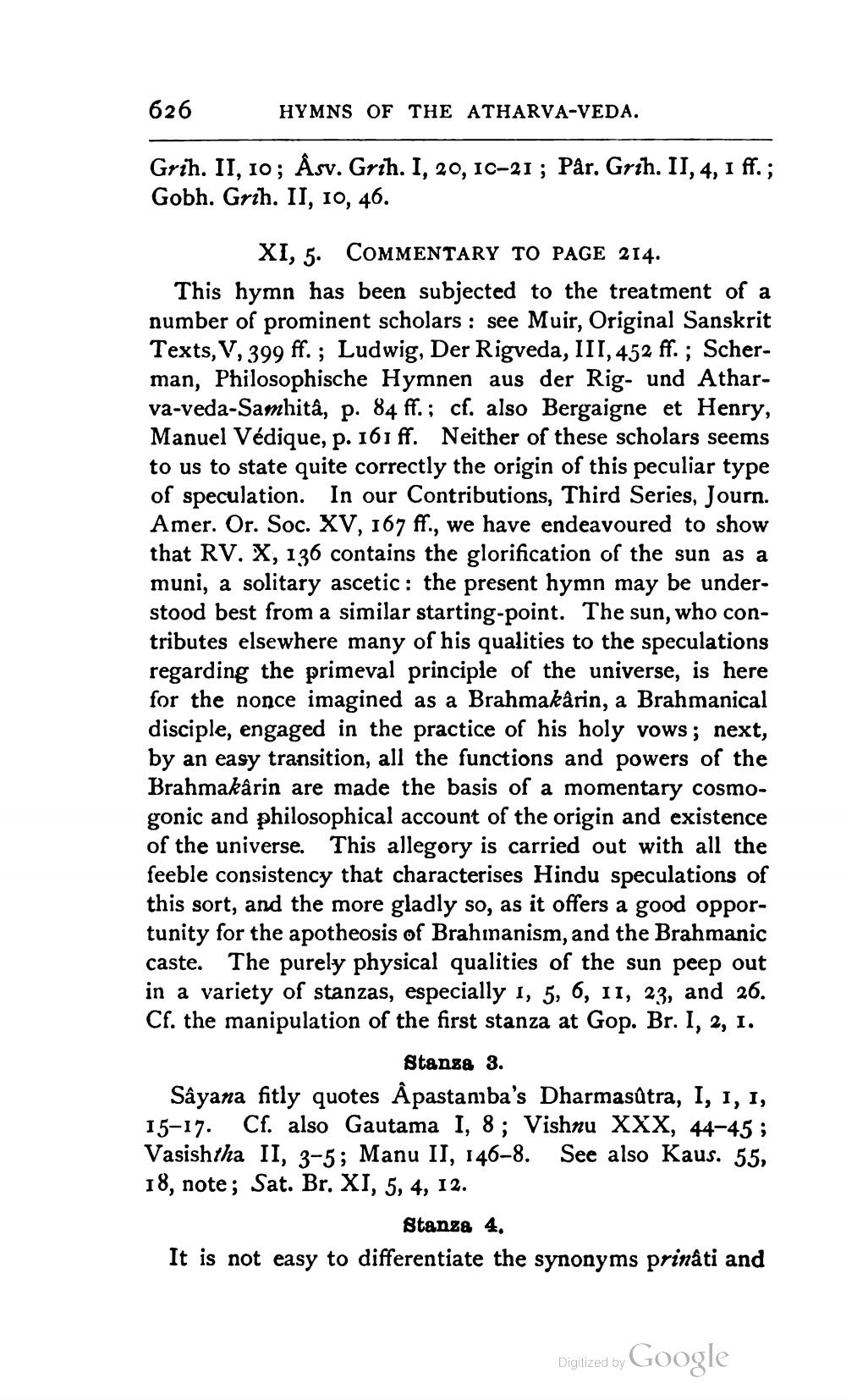________________
626
HYMNS OF THE ATHARVA-VEDA.
Grih. II, 10; Åsv. Grih. I, 20, 1C-21; Par. Grih. II, 4, 1 ff.; Gobh. Grih. II, 10, 46.
XI, 5. COMMENTARY TO PAGE 214. This hymn has been subjected to the treatment of a number of prominent scholars : see Muir, Original Sanskrit Texts, V, 399 ff.; Ludwig, Der Rigveda, 111, 452 ff. ; Scherman, Philosophische Hymnen aus der Rig- und Atharva-veda-Samhità, p. 84 ff. ; cf. also Bergaigne et Henry, Manuel Védique, p. 161 ff. Neither of these scholars seems to us to state quite correctly the origin of this peculiar type of speculation. In our Contributions, Third Series, Journ. Amer. Or. Soc. XV, 167 ff., we have endeavoured to show that RV. X, 136 contains the glorification of the sun as a muni, a solitary ascetic: the present hymn may be understood best from a similar starting point. The sun, who contributes elsewhere many of his qualities to the speculations regarding the primeval principle of the universe, is here for the nonce imagined as a Brahmakârin, a Brahmanical disciple, engaged in the practice of his holy vows; next, by an easy transition, all the functions and powers of the Brahmakârin are made the basis of a momentary cosmogonic and philosophical account of the origin and existence of the universe. This allegory is carried out with all the feeble consistency that characterises Hindu speculations of this sort, and the more gladly so, as it offers a good opportunity for the apotheosis of Brahınanism, and the Brahmanic caste. The purely physical qualities of the sun peep out in a variety of stanzas, especially 1, 5, 6, 11, 23, and 26. Cf. the manipulation of the first stanza at Gop. Br. 1, 2, 1.
Stansa 3. Sâyana fitly quotes Âpastamba's Dharmasútra, I, 1, 1, 15-17. Cf. also Gautama 1, 8; Vishnu XXX, 44-45; Vasishtha II, 3-5; Manu II, 146-8. See also Kaus. 55, 18, note; Sat. Br. XI, 5, 4, 12.
Stanza 4. It is not easy to differentiate the synonyms prināti and
Digized by Google




